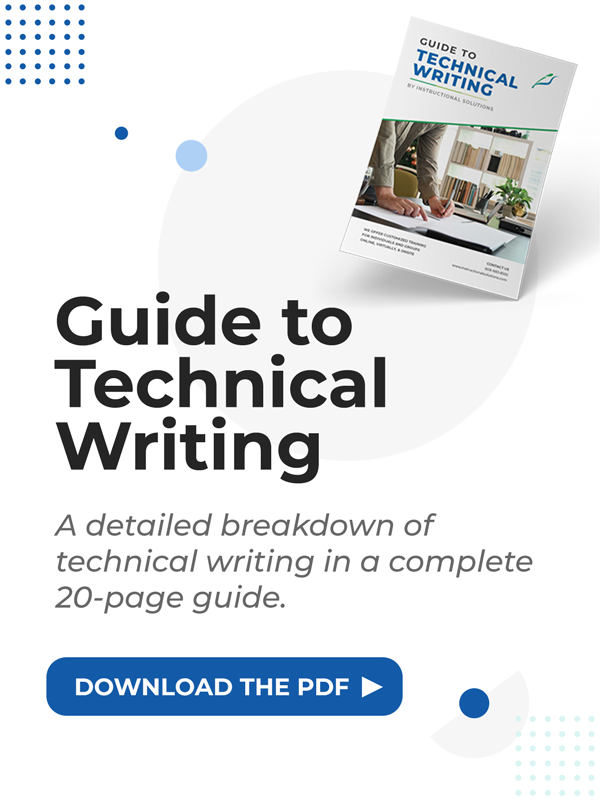What is Business Writing and Its Types: A Guide for Professionals

Originally published December 10, 2021, updated June 12, 2025

Table of Contents
Business writing refers to the formal communication style used in professional settings to write documents such as reports, emails, memos, proposals, etc. It typically aims to convey information clearly and concisely, follows specific formats, uses a professional tone, and focuses on efficiently conveying information to achieve specific business objectives or goals.
Writing for business is the process of communicating business ideas and concepts through written words. The focus of this form of business communication is to persuade, inform, or entertain.
Below is our comprehensive guide on what is business writing to help you fully understand this concept. This blog post also shows you how to improve this essential skill and write to business colleagues with ease!
Definition of business writing
Business writing is very pragmatic. Essentially, it is a type of writing that enables a reader to know or do something. It flows up, down, laterally, internally, and externally to customers. If you're wondering about business writing meaning, it refers to communication that supports professional goals through clear and purposeful written content.
Good business writing is developed following an optimal writing process that first defines the reader and purpose and then subsequently provides the information that the defined reader needs. The information provided must be logical and well-ordered and written in concise, clear, engaging language that is grammatically correct.
Improving your business writing can propel careers and businesses. It’s the channel that transmits nearly all business work, insight, and interaction. It is the lifeblood and foundation of strong businesses.
Different types of business writing
It is important to note that there are many different types of business writing. Practical examples include:
- Email - Business Email can be simply transactional, or it may persuade or inform. They are sent both internally within your company and externally to vendors, customers, and prospects, for example.
- Business Letters - Business Letters may be formal or informal or short or long, depending on the context and purpose. A business letter is always external. It communicates information sent from your company to an external reader.
- Business Memos - Business Memos (also called memoranda) are always internal communication. They summarize information into an official statement issued to individual employees or groups inside an organization.
- Reports - Reports take many forms, including briefs, scorecards, performance appraisals, regulatory reviews, an annual report, etc. They provide information to enable an informed decision. A report is usually a more official document that is sent both internally and externally.
- Handbooks - Handbooks are instructional documents that provide information employees need to understand and follow company policies. Handbooks are internal documents.
Core requirements of good business writing skills
Know your audience
There are two primary questions to ask every time we begin a business document (or email):
- Who is my reader? We have to understand our readers to provide the information they need! Often, we are writing to a wide audience, so be sure to consider all readers.
- What do I want my reader to know or do? What, exactly, is the purpose of this document?
If we can't answer either of these questions, stop. There is no purpose to what you are about to write, so it's not good business writing. This analysis will also help you use the correct tone.
If you are looking for more quick tips, you may enjoy our complete list of the best business writing tips and tricks.
Remember that substance matters
The most important element in this type of writing is the information it conveys.
If there are content gaps, incorrect information, irrelevant information, or the same information is repeated in different spins, the document will fail. Always. Even if the words and grammar are beautiful and correct, the document will fail.
At its core, writing for business is about information exchange, so the information contained in your document is the foundation of good business writing. The information must be complete, relevant to the reader, and accurate.
Aim for concise, clear writing.
We always remind our clients to "write to express, not to impress."
The goal is to transmit information to a reader, so business writing requires clear language to help a reader understand the information easily. Writing clearly is one of the harder aspects of business writing. One of my favorite quotes about writing is by Blaise Pascal:
"I apologize for the length of this letter. I did not have time to make it shorter."
It's easy to write long, rambling sentences. Concise, clear writing requires skill.
Concision can be challenging because it's a skill not emphasized in college. In academic writing, assignments often require a certain length. We have to fill ten pages, and we're instructed to develop our writing and expand the concept. We earn good grades partially through the length and impressive language. Puffed-up language is rewarded.
No one in business wants a longer document. In business writing, the required skills are the ability to extract what is significant, synthesize, and write clearly.
Our schools and colleges are correct to teach and emphasize expository writing. No one can become a good business writer without first being taught how to develop a thoughtful, well-organized essay. We can't extract or synthesize until we understand how to write cohesively and develop a concept. Business writing sits on top of academic writing.
I've taught both academic writing at a university and business writing to thousands of clients. Good business writing is harder to write than good academic writing.
Lead with what matters
We remind our clients to follow the acronym B.L.O.T. — "bottom line on top." State exactly why you're writing upfront.
Your readers are busy and overloaded with information. Help them cut through information overload by leading with the purpose of your document. Get to the point and avoid bloated sentences.
Only vary from leading first with what matters if the information may be disagreeable to the reader. Buffer first only if you think your reader may emotionally disengage if you open directly. Read more about the writing style of delivering bad news.
Format for easy scan
Business readers are busy and cannot read everything. To help with this information overload, business documents must be easy to absorb. This means
-
-
- Break paragraphs frequently to match new thoughts
- Use lots of white space
- Indent sub-information to indicate hierarchy
- Use numbered or bulleted lists
- Headings above document sections are a natural antidote for information overload
- Judicious use of bold or color can highlight key points
-
Watch out for grammatical errors
Poor grammar hurts. Good grammar shows both attention to detail and skill.
These traits are highly valued. A grammar error, such as a missing period, is unprofessional. Good grammar is the conventional language to help us communicate in a common language. It does matter.
Writing for business, like all writing, evolves. Grammar and style also evolve. Interestingly, all but one style guide now states that emoticons used judiciously are acceptable in business writing. All style guides now recommend one space after a period or another full stop in a sentence, instead of two.
These changing standards are why business writers need to continually hone their writing skills to stay current with conventions by reading online resources about business writing or taking a business writing course.
Your opportunity to improve your business communications.
“The difference between the right word and the almost right word is the difference between the lightning and the lightning bug.” - Mark Twain
Good business writing:
- Focuses on the reader, not the writer.
- Is purposeful and seeks to help a reader know or do something.
- Transforms complex information into something easy to understand.
- Engages a reader and provides relevant information.
- Is written with correct sentence structure.
To learn more about business writing, check out our full Guide to Business Writing.
Conclusion
Mastering business writing empowers you to communicate ideas with precision, clarity, and purpose.
By defining your audience, organizing key content with brevity, and formatting for easy scanning, you bolster both understanding and professional credibility.
Remember: effective business writing distills complex information into actionable insights, supports informed decision-making, and fosters trust in every interaction. Whether crafting emails, reports, or proposals, the skills you’ve honed through this guide will help you express yourself more confidently and ensure your message resonates across any business context.
Improve your business writing with a course.
In every business writing courses we offer, you get one-on-one instructor feedback on your actual writing.
Frequently Asked Questions (FAQs)
What is business writing meaning?
Business writing is purposeful, professional communication used in the workplace to convey information clearly and efficiently. It includes emails, reports, proposals, memos, briefs, and other documents that support decision-making and action.
Why is business writing important in the workplace?
Business writing is a critical professional skill that directly impacts how effectively teams operate and decisions are made.
Strong business writing ensures that ideas, instructions, and information are communicated clearly, accurately, and professionally. It streamlines workflows, reduces costly misunderstandings, and supports accountability across departments. Whether you're writing emails, reports, or proposals, the ability to convey your message with precision and clarity strengthens your credibility and helps you build trust with colleagues, clients, and stakeholders.
Clear writing isn’t just helpful. It’s essential to success.
How can I improve my business writing skills?
To improve your business writing, focus on clarity, structure, and tone. Start by identifying your audience and purpose, organizing your content logically, and using concise, direct language. Training, practice, and feedback from a business writing course or coaching can accelerate your progress.
What are some common mistakes in business writing?
Common mistakes in business writing often stem from a lack of clarity, structure, or audience awareness. Being too vague or too wordy can bury your main message, making it harder for readers to understand or act. Writing as you speak, while natural in conversation, can lead to rambling, informal, or imprecise language that doesn't translate well on the page.
Failing to tailor your message to what the reader actually needs is another frequent error. Effective business writing puts the reader first, anticipating their questions, level of knowledge, and decision-making needs. When writers don’t focus on what matters most to the audience, communication becomes inefficient or irrelevant.
Overusing jargon or technical terms without explanation can also confuse or alienate readers, especially those outside your field. Poor organization, such as presenting information in the wrong order or without clear headings, makes it difficult for busy professionals to find key takeaways quickly.
Finally, neglecting proper formatting and proofreading can result in dense, hard-to-read text filled with avoidable errors. These mistakes can damage a professional's image and reduce the effectiveness of the message.
How does business writing differ from academic or creative writing?
Business writing is action-oriented, concise, and designed for a specific audience in a professional setting. A unique feature is that its core purpose is to help a reader know or do something.
Unlike academic writing, which often explores ideas in depth, or creative writing, which emphasizes storytelling, business writing focuses on clarity, brevity, and real-world outcomes.
In an academic essay, a student will earn an A grade for expanding, exploring, and developing an idea. In contrast, a business writer will earn an A grade for synthesizing, extracting, and making complex ideas easy to understand.
Is tone important in business writing?
Yes, tone plays a crucial role in shaping how your message is received. A professional, respectful tone builds trust and reinforces credibility, while an inappropriate tone can confuse or alienate your audience, even if the content is accurate.
Maya Angelou’s great quote sums up the tone nicely:
"I've learned that people will forget what you said, people will forget what you did, but people will never forget how you made them feel.

